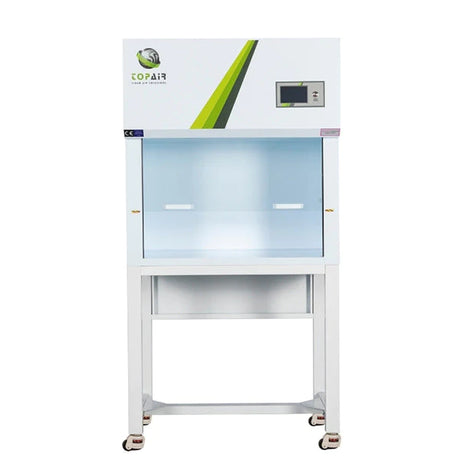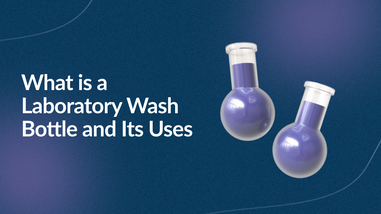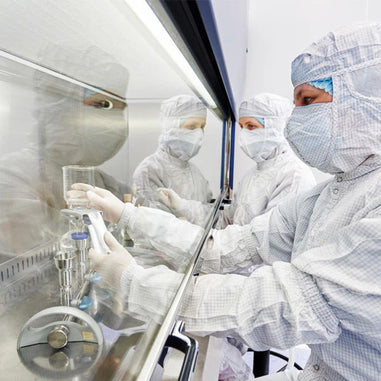- No products in the cart.
In the dynamic landscape of laboratory safety and efficiency, ductless fume hoods have emerged as versatile and increasingly popular solutions. Offering a unique approach to containment and air purification, ductless fume hoods provide a range of benefits and applications, making them a valuable asset in various scientific settings. This blog post aims to provide a comprehensive overview of ductless fume hoods, delving into their advantages, diverse applications, and the latest technological trends shaping their evolution.
Understanding Ductless Fume Hoods: A Brief Overview
Traditionally, fume hoods have been integral in laboratories for the containment of hazardous fumes and vapors. However, ductless fume hoods represent a departure from the conventional ducted systems by eliminating the need for external ventilation. Instead, these hoods employ advanced filtration systems to capture and purify contaminants, recirculating clean air back into the laboratory environment.
Benefits of Ductless Fume Hoods:
-
Flexibility and Mobility:
Ductless fume hoods offer unparalleled flexibility as they don't rely on fixed ductwork. This allows for easy installation and relocation, making them ideal for modular or temporary lab setups. Researchers can adapt their workspace without the constraints of ducting infrastructure.
-
Cost-Efficiency:
The installation and maintenance of traditional ducted fume hoods can be costly. Ductless systems eliminate these expenses, providing a more budget-friendly option. Additionally, energy efficiency is enhanced as the recirculation of air reduces the demand on heating, ventilation, and air conditioning (HVAC) systems.
-
Environmental Impact:
Ductless fume hoods contribute to a greener laboratory environment. By eliminating the need for external exhaust, they reduce energy consumption and minimize the laboratory's overall carbon footprint. This aligns with the growing emphasis on sustainability in scientific practices.
-
Enhanced Safety:
Advanced filtration technologies in ductless fume hoods ensure the efficient removal of contaminants, enhancing safety for laboratory personnel. These hoods often incorporate HEPA or activated carbon filters, providing reliable protection against a wide range of hazardous substances.
Applications of Ductless Fume Hoods:
-
Chemical Handling:
Ductless fume hoods are well-suited for laboratories engaged in chemical analysis and manipulation. They provide a secure environment for researchers working with a variety of chemicals, protecting both the personnel and the surrounding workspace.
-
Pharmaceutical Research:
In pharmaceutical settings, where precision and cleanliness are paramount, ductless fume hoods find applications in the handling and preparation of pharmaceutical compounds. Their mobility allows for strategic placement within the pharmaceutical research environment.
-
Biological Research:
Ductless fume hoods are suitable for biological laboratories working with agents that require containment. The efficient filtration systems ensure the safe handling of biological materials, contributing to a controlled and secure workspace.
-
Educational Institutions:
Due to their adaptability and ease of installation, ductless fume hoods are increasingly utilized in educational settings. They provide an excellent solution for teaching laboratories, where the configuration of the workspace may change frequently.
Choosing the Right Ductless Fume Hood:
Selecting the appropriate ductless fume hood requires careful consideration of various factors:
-
Filtration System:
Evaluate the type of filtration system that best suits your laboratory's needs. HEPA filters are effective for particulate matter, while activated carbon filters excel in adsorbing gases and vapors. Some systems combine both for comprehensive filtration.
-
Chemical Compatibility:
Consider the specific chemicals used in your laboratory. Different fume hoods are designed to handle specific classes of chemicals, so it's crucial to choose a hood that is compatible with the substances you work with.
-
Airflow and Face Velocity:
Assess the airflow capabilities and face velocity of the ductless fume hood. These factors determine the efficiency of contaminant capture. Adequate face velocity ensures that contaminants are effectively contained within the hood.
-
Size and Configuration:
Determine the size and configuration of the fume hood based on the spatial constraints of your laboratory and the nature of your work. Some applications may require larger or specialized hoods to accommodate specific equipment.
-
Monitoring and Alerts:
Opt for ductless fume hoods equipped with monitoring systems that provide real-time feedback on filter status and airflow. Some models feature alarms to alert users when filters need replacement, ensuring consistent safety.
Technological Trends in Ductless Fume Hoods:
-
Smart Monitoring Systems:
The integration of smart technologies allows for real-time monitoring of key parameters, enabling remote access and control. Researchers can receive alerts and data updates on their mobile devices, enhancing overall efficiency and safety.
-
Advanced Filtration Materials:
Ongoing research and development in filtration materials lead to the use of advanced media that offer increased efficiency in capturing a broader range of contaminants. This contributes to improved safety standards in laboratories.
-
Energy-Efficient Designs:
Manufacturers are focusing on developing energy-efficient ductless fume hoods to reduce environmental impact and operational costs. This includes innovations in fan design, control systems, and overall system optimization.
-
Integration with Laboratory Information Management Systems (LIMS):
Integration with LIMS allows for seamless data exchange and coordination between ductless fume hoods and laboratory management systems. This integration streamlines workflow management and enhances data traceability.
Conclusion: Navigating the Future of Laboratory Safety
Ductless fume hoods represent a paradigm shift in laboratory safety and efficiency. Their versatility, cost-effectiveness, and environmental benefits make them a compelling choice for a wide range of applications. As laboratories evolve to meet the demands of cutting-edge research, ductless fume hoods continue to play a crucial role in shaping the future of laboratory safety practices.
Choosing the right ductless fume hood involves a careful assessment of laboratory needs, from filtration capabilities to chemical compatibility. The ongoing technological advancements in smart monitoring, advanced filtration materials, and energy-efficient designs underscore the commitment of manufacturers to continually improve safety standards and user experience.
In conclusion, ductless fume hoods offer laboratories the flexibility to adapt, the efficiency to thrive, and the safety to innovate. By staying informed about the latest trends and understanding the diverse applications and benefits of ductless fume hoods, laboratories can make informed decisions that contribute to a safer, more sustainable, and technologically advanced scientific environment.
For over 40 years, Lab Pro Inc. has been your reliable destination for premium cleanroom lab supplies, including top-notch Ductless Fume Hoods. Trusted by global industries, we offer exceptional quality in every product. Experience next-day service in California. Contact us online or at 888-452-2776 to explore tailor-made solutions for the laboratory industry. Elevate your experiments with Lab Pro Inc. – your partner in precision and excellence, now featuring biohazard safety cabinets.












































